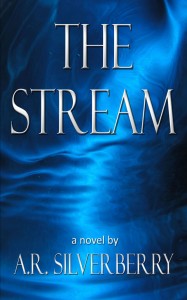Supercharge your creativity.
Last week, I outlined nine ways to enhance your creativity and supercharge your writing. Today I offer three more ideas. As you’ll see, they work synergistically to help you.
Trigger Your Creativity
Just as day follows night, you can trigger your creativity using a learning procedure called classical conditioning. Remember Pavlov and his dog? For those of you who don’t know him, Pavlov was a Russian physiologist who did pioneering work on understanding behavior. In a classic experiment, he presented a dog with some powdered meat. Immediately, the dog began to salivate. Powdered meat is yummy to dogs, and therefore was an unconditioned stimulus. In other words, Pavlov didn’t need to train the dog to salivate on seeing the meat. The dog did it automatically. But Pavlov did something else. When he presented the dog the meat, he also rang a bell. He did that a number of times until the dog associated the bell with the meat. Later, Pavlov only rang the bell. You can guess what happened. Right, the dog salivated!
You can trigger you creativity the same way. Here’s how. Write at the same time and in the same place every day. Your brain will automatically respond to all the cues that surround your writing. For example, I wrote most of Wyndano’s Cloak commuting on a train. It took about 75 minutes to go from home to work, and that was on a good day! The train starting to move, the sound of the wheels on the tracks, the clang of the couplings, the conductors walking by and clipping tickets, the hum of the other passengers talking, flipping open my laptop—all these acted as cues to my brain, triggering me into a state of creative flow just as readily as that bell triggered Pavlov’s dog. When I disembarked, I walked twenty-minutes between the train station and work, giving me additional time to reflect and take notes on whatever was happening in the story.
After work, the walk back to the train station triggered me back to writing mode. Again, I took notes. Ideas were flowing. By the time I got to the train, I was raring to go, and once again, the sound and vibrations of the train further slipped me into the process.
So it went, almost three hours on the train, round trip, five days a week, plus forty minutes walking, catching snippets of dialogue, a line here and there, a metaphor, a simile. By the end of a year I had the first draft completed. Sadly, we moved. I sure miss that train!
But the same principal can be applied anywhere. All it takes is consistency. Did you ever see a picture of Ray Bradbury’s writing area? It’s filled with posters, bottles, miniatures, bric-a-brac, and all of it acted as a cue to trigger the flow of his creative juices. Another example is writer and director Guillermo del Toro’s residence, “Bleak House.” He’s got all kinds of oddities—monster memorabilia, props, first-edition books, mannequins displayed in every room. They stimulate his unconscious and creativity.
Incubation
At work, after leaving the train, the novel left my mind. I was completely focused on the task at hand. But the eight-and-a-half hours on the job allowed the story to incubate. Time away from your writing can be an important part of the creative process. Have you noticed how if you take a break and then come back to your computer, problems you were having with a scene often melt away. That’s because your brain never stops thinking—even when you’re sleeping—you’re just not aware that it’s working on whatever is important to you. If you’ve ever woken up from a dream with a word, phrase, or idea, for your story, you know what I mean. So be sure to allow periods of incubation, during the day, the week, the months you’re working on a project. For many people, it may be good to complete a draft, and then stick it in a drawer. I know that conventional wisdom says to get your work out as fast as possible, so you can keep your readers engaged. But if you let some time pass, you will often see your writing with fresh eyes, and you might not be as protective of your darlings.
Limit Your Writing Time
In my last post, I discussed the idea of writing fast to bypass the critical brain. That same writing teacher also had us put limitations on our time. This may seem counter intuitive. When you’re in the flow, who wants to stop writing? Here’s how the technique works. You decide ahead of time how much time you want to allocate to writing. It could be just a little, like twenty minutes. It could be several hours or most of the day. Whatever you decide, you must not go past your assigned time. An interesting thing happens when you do this. You feel an urgency to get back to your writing. Your writing is more intense, more concentrated. Plus, you benefit from that incubation period. At the end of your time, don’t worry about losing something you’re hot on. Make a few notes about what you want to do next. When you return for your next writing session, it will come back to you. My uncle, Irving Adler, wrote or co-wrote eighty-seven books that way, writing between 9 and 11 a.m. every morning. His approach worked for me. It didn’t matter what I produced, as long as I put in my time. And lo and behold, books got written.
There you have it, three more tips for supercharging your creativity. In case you missed part one, you can find it here.

WYNDANO’S CLOAK, by A. R. Silverberry

THE STREAM, by A. R. Silverberry


